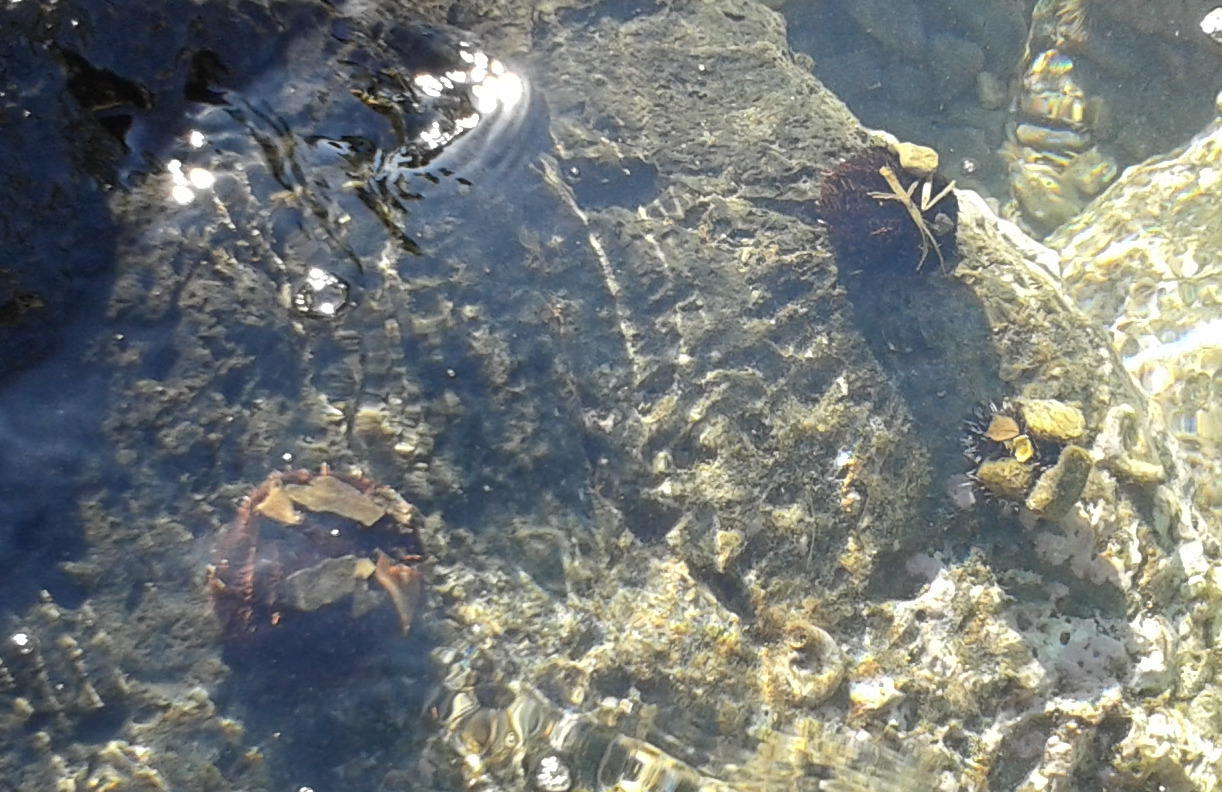Our latest lab publication is posted on-line at Marine Genomics:
Láruson, Á. J., S. E. Coppard, M. H. Pespeni, F. A. Reed (2018) Gene expression across tissues, sex, and life stages in the sea urchin Tripneustes gratilla [Toxopneustidae, Odontophora, Camarodonta]. Marine Genomics, (in press); https://www.sciencedirect.com/science/article/pii/S1874778718300709
The collector urchin is an important ecosystem engineer and food source and is distributed in oceans across almost half of the Earth's circumference. We extracted and sequenced RNA from several sea urchin samples and recovered over 20,000 genes, which we estimate to cover over 70% of the total genes in the genome. The main goal of this work is to generate a genomic resource to enable additional genetic studies in this species. It's tremendous population size may mean that genetic drift is minimized, that there is a great deal of standing genetic variation, and that subtle forces of natural selection may operate very efficiently. One central question is: why has this species not split into several species across its range / how does it maintain genome compatibility across various environments (presumably with local adaptation) and enormous distances?
A couple of highlights from the paper:
- The sex determination system of these sea urchins is unknown. We found hints of differences between male and female gene expression, including genes known to be involved in sex determination in other species such as Wnt-4 and SoxH, as well as differences in splice isoforms between the sexes, but there is still much more work to be done.
- Sea urchins face a lot of infectious challenges in marine environments ranging from bacteria, to viruses, to transmissible cancer cells. The purple sea urchin genome showed an expansion of TLR genes involved in innate immunity; however, this was not seen in the collector urchin. Rather, a dramatic expansion of DMBT1 genes appears to have occurred which play a role both as a tumor suppressor and interacts with immune response. In addition to alternative approaches for urchins to address disease this might also help to explain the collector urchins longevity and tremendous regenerative ability.
- This species is routinely harvested for human consumption. We wrote the paper in such a way as to not sound overly alarmist but it was fascinating to find several possible toxin producing genes. (This does not automatically mean that they are toxins or that they affect humans in a toxic way.) However, these urchins have to protect themselves from predation and, in addition to their spines, venom is a type of defense known to exist in this family aptly known as the Toxopneustidae. These included several concerning sounding names such as: Venom protein 302, Stonustoxin subunit alpha, Verrucotoxin subunit beta, Alpha-latrotoxin-Lhe1a, Venom serine protease Bi-VSP, C-type lectin lectoxin-Enh5, and Snake venom metalloprotease inhibitor 02A10.
